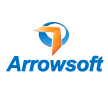
Take a deep dive into the world of cloud-based SaaS development accessibility. This educational article offers a thorough examination of the importance of inclusive design principles, guaranteeing that cloud-based software interfaces are user-friendly for all users. Explore methods for designing cloud interfaces that put user-friendliness first for all users. Examine the relationship between technology and accessibility to identify important factors and practical takeaways. Come along with us as we work to create a more welcoming digital environment. #DeepDiveCloudAccessibility.
Introduction:
The importance of accessibility in the quickly changing world of cloud-based SaaS development cannot be emphasized. It is critical to make sure that cloud-based software interfaces are created with inclusion in mind as technology continues to change our digital experiences. This essay delves deeply into the topic of accessibility, highlighting the value of inclusive design principles and offering techniques for developing user interfaces that put the needs of all users first.
Understanding the Significance of Inclusive Design Practices :
Beyond simple compliance, inclusive design aims to create user interfaces that are sensitive to the wide range of needs of users. We explore the fundamental ideas of inclusive design and examine how it improves user experiences and increases accessibility. We demonstrate the beneficial effects that inclusive design may have on user engagement and overall happiness by looking at real-world examples.
Navigating the Cloud: Key Considerations for Accessibility :
The cloud presents new accessibility options as well as challenges. We break down the complexities of developing cloud-based software as a service (SaaS) and highlight possible obstacles that users with different skill sets can encounter. We cover the intricacies of collaborative platforms and data accessibility concerns, along with strategies for overcoming them and guaranteeing a flawless user experience for all.
Strategies for Usability and Inclusivity in the Cloud :
This in-depth analysis would be incomplete without useful tactics for designers and developers. We examine concrete methods for integrating inclusive design into cloud-based user interfaces. Our toolbox includes techniques for designing interfaces that are both user-friendly and accessible to people of different abilities. These techniques range from utilizing voice interfaces to integrating adaptive technologies.
The Intersection of Technology and Accessibility :
Accessibility and technology have a mutually beneficial relationship. This section looks at how assistive technologies are developing and how they might improve accessibility. We demonstrate how technical innovations can be used to create a more inclusive digital world, using everything from screen readers to speech recognition.
Fostering a More Inclusive Digital Landscape:
The path towards inclusive interfaces is not limited to design; it encompasses the entire digital environment. We examine how cooperation and lobbying might advance accessibility norms in the sector. We hope to contribute to a future where cloud-based SaaS is available to all users, irrespective of their ability, by advocating for vocal inclusive design.
The Human-Centered Approach :
Human-centered design has human-centered design as its cornerstone. This section explores how empathy-driven design might result in interfaces that accommodate a wide range of skills, with a focus on understanding users' different requirements and preferences. Case examples from the real world highlight effective applications of this strategy and show how it affects user engagement and pleasure.
Overcoming Challenges in Data Accessibility :
Large volumes of data are frequently handled by cloud-based SaaS, which makes it difficult for users with different levels of ability to access and understand information. We examine more closely at creative fixes and industry best practices for increasing data accessibility. Learn how developers may overcome obstacles and build a more inclusive data experience in the cloud with customizable data visualization tools and alternate data representation techniques.
Collaborative Platforms and Inclusivity :
Cloud-based platforms are known for their collaborative nature, but they also present special accessibility issues. The methods for increasing inclusivity on collaborative platforms are discussed in this section. Learn how to design collaborative places that empower all users, from facilitating smooth communication for people with speech impairments to addressing navigational obstacles for those with mobility issues.
Adaptive Technologies:
The field of adaptive technology is developing quickly. This section offers a thorough examination of the most recent developments, including user interface customization and AI-driven accessibility features. Learn how these technologies can be combined with cloud-based SaaS to offer tailored, flexible experiences that make it easy for users with a range of needs to interact and traverse digital interfaces.
Voice Interfaces and the Future of Interaction:
Voice interfaces mark a breakthrough in terms of accessibility. We look at how voice technology can be used to make interfaces more inclusive, with a focus on how it can help users who have cognitive, motor, or vision impairments. Discover the best practices for creating cloud-based voice interfaces and how this technology can completely change how people interact with software.
Global Perspectives on Accessibility Standards:
Standards for accessibility differ from place to place and are a global topic. This section examines the global environment of laws and norms pertaining to accessibility. For developers and designers working on cloud-based SaaS with a broad user base, understanding these variations is essential. Learn about the best practices and compliance requirements for maintaining accessibility globally.
Emerging Trends:
The accessibility space is always changing due to emerging trends and technological advancements. This section provides an overview of new developments in the field, ranging from the use of virtual reality to improve user experiences to the application of neuro-inclusive design to address cognitive diversity. Keep up with the times and consider how inclusive interfaces in cloud-based SaaS may develop in the future.
Conclusion: Charting the Course for Inclusive Cloud Accessibility
We consider the critical role inclusive design will have in influencing cloud-based SaaS development going forward as we wrap up our in-depth analysis. By adopting accessibility as a cornerstone, we create a digital environment that genuinely meets the needs of every user.
About the Creator
Arrowsoft
The Technology Partner to All Your Business Needs






Comments
There are no comments for this story
Be the first to respond and start the conversation.